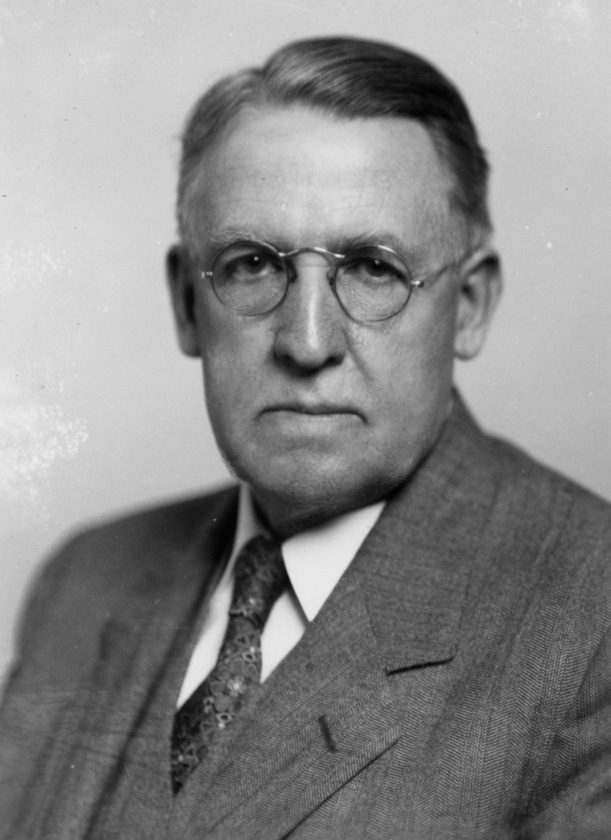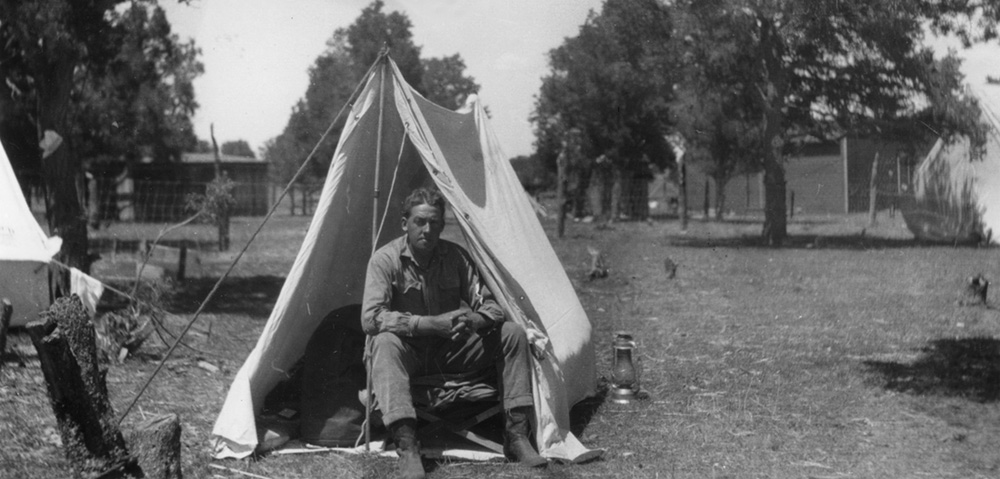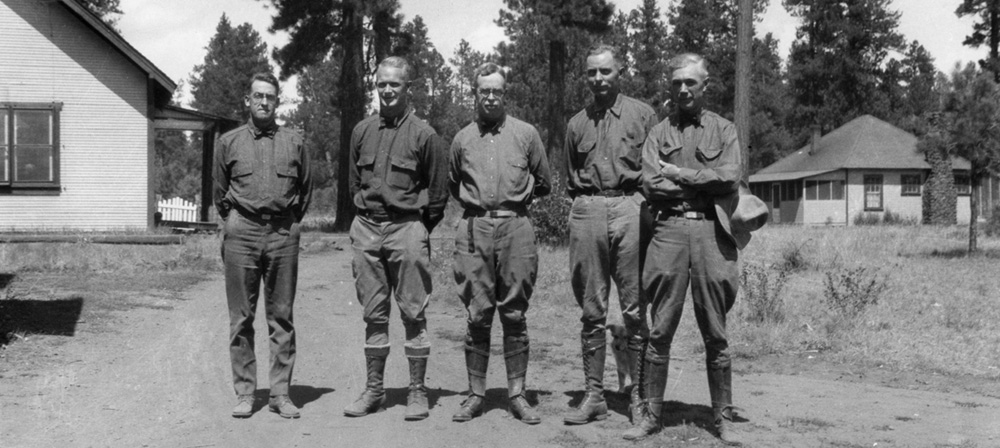Raymond E. Marsh

Raymond E. Marsh
At age 24, New Hampshire native Raymond Marsh found himself in the "enervating heat of Louisiana," working to complete his field work as a graduate student in the Yale School of Forestry. After less than a year in the South, Marsh turned his thoughts north and west to Montana - far from the "rampant ticks, chiggers, and water moccasins" that also made Louisiana their home.
In the spring of 1910, Raymond Marsh passed his Civil Service exam and sent his application to the Forest Service to work in one of the national forests in Montana. When word came back, it was good news with a twist: the Forest Service agreed to hire Marsh, but his assignment was to the agency's Southwest region, located in Albuquerque, New Mexico. He never made it to an agency position in Montana.
As it turned out, Marsh grew fond enough of the Southwest to stay on the job there for sixteen years until he accepted a promotion to work in the Washington, D.C. office of the Forest Service. Fate may also have been kinder to Marsh than he first realized, as Montana's 1910 fire season proved to be so dramatic it would thereafter be known simply as, The Great Burn. Furthermore, Marsh arrived in New Mexico to find a pleasant community in Albuquerque - which at the time counted a population of just 11,140 - and a fine group of colleagues in the Forest Service including Earle Clapp, J. Howard Allison, Clifford W. McKibbin, and Aldo Leopold, among others. By 1913, he had also met and married Lillian Sutherland.
Raymond Marsh was born in Westport, New Hampshire, in 1885, then stayed close enough to home to graduate from Dartmouth College in Hanover, New Hampshire. He earned his master's degree in forestry from Yale in 1910, then began his forty year career with the Forest Service.

Raymond Marsh in tent, 1911.
Marsh's first years of work for the Forest Service sent him into the woods for the R. E. Marsh, chief of the Carson National Forest Reconnaissance Party, 1911. USFS Headquarters History Collection strenuous task of assessing forest stands in the rough country of New Mexico and Arizona. As he later recounted, "Had I realized that this would be the first of four season-long reconnaissance parties in the Southwest of which I would be a member…I would have been unhappy. I have never regained any desire for camping as a matter of pleasure."
Timber reconnaissance, or "cruising," focused on estimating the volume and character of forest stands, as well as documenting details of the landscape, cultural artifacts, forest types and boundaries, and topographical features. Marsh described the work as follows: "Each cruiser worked alone. He carried a Jacob's staff, the staff compass in a case on his belt, an anaroid barometer, and a hand counter for counting paces… He carried a light lunch in a large handkerchief fastened to his belt, and in dry localities a canteen with drinking water slung over his shoulder. He carried as little weight as possible. He was usually assigned a row of three sections [three square miles] for two days' work. He started from a known section corner…turned and getting direction by compass and distances by pacing, he walked through the 3-mile row…tying in at each mile with a section corner. He then turned around and came back through the center of the adjacent row…tying in with the nearest line quarter section corners… Next day he tackled the other half of the same row of sections."
Though the day consisted of just six miles of cruising, the task was formidable as it involved cross-country hiking using compass bearings and pacing. Throughout the process, workers were expected to calculate the volume of sawtimber and keep other detailed notes that would inform land management decisions in the area for decades to come.
By 1912, Marsh advanced to become Deputy Forest Supervisor, and in 1914 the agency named him Supervisor of the Carson National Forest in New Mexico. In 1917 he was transferred to head the Coconino National Forest in Arizona, then in 1919 he took charge of forest management of the entire Southwestern Region (called a "District" at the time).

Coconino National Forest Ranger Training School, 1926. Left to right: Raymond E. Marsh, E.W. Loveridge, Earle H. Clapp, H.G. Collins, and F.C.W. Pooler.
With his transfer to Washington, D.C. in 1926, Raymond Marsh became the Assistant Chief in the Division of Forest Economics. In 1936, the agency promoted him as its Assistant Chief overall. As his career advanced, Marsh became a prolific author of technical bulletins and articles, including several following his retirement in 1950. He also worked with forestry in Sweden, Finland, and Norway, and in 1958 was honored with the Royal Order of Vasa by the Swedish government for his contributions there.
In 1970, Marsh moved from Washington, D.C., to Spokane, Washington, to be nearer his family. He died one year later at age 86.
Sources
- Marsh, R.E., "Timber Cruising on National Forests of the Southwest," transcript from an oral history conducted by the Oral History Office of the Bancroft Library, University of California-Berkeley, August 10, 1969.
- Obituary for Raymond Eugene Marsh, U.S. Forest Service, Washington D.C., June 2, 1971.

